History
The Mechanics' Institute Movement
The Maldon Athenaeum was established in 1863 on the principles of the Mechanics’ Institutes Movement which began in Scotland in 1799 when George Birkbeck, a Quaker, gave a series of free lectures for the working men of Glasgow. From there, the idea spread throughout Britain, its colonies and to the United States.
The term ‘mechanic’ at that time meant a tradesman, artisan, or skilled worker. The aim of mechanics’ institutes was to provide free educational, cultural and self-improvement opportunities for working men. They often included libraries and reading rooms. Each organisation began with a public meeting at which a committee was elected. They were always independent, community-based, often run by volunteers, and financed through locally-raised funds.
A mechanics’ institute was founded in the Port Phillip District of New South Wales (which we now know as Melbourne/Naarm) in 1839, four years after the settlement was established. In 1872 it was renamed the Melbourne Athenaeum. The name ‘Athenaeum’ is a reference to the temple of Athena, the ancient Greek goddess of wisdom and was often used in the names of libraries and institutions for scientific or literary studies.
Mechanics’ institutes spread further afield when gold was discovered in 1851 on Dja Dja Wurrung Country at Clunes, quickly followed by other discoveries in the region. The impact of the gold rush on the countryside and the traditional owners was enormous. Historian Bain Attwood states that 10,000 diggers had descended on Barkers Creek, Mount Alexander within a few months of the first strike and, as a result, the Dja Dja Wurrung’s ‘camping areas along creeks and streams became alluvial sites, timber was felled and burned, plants trampled and sacred sites violated.’
Such devastation was widespread as miners flocked to each new gold discovery, pitching their tents and digging holes. It was a time of great instability with people moving on if the discovery proved insubstantial. On richer goldfields, however, new settlements sprang up as miners put down roots, and entrepreneurs moved in to provide goods and services. Within a short time, each new settlement established its own mechanics’ institute. To name just a few, Bendigo Mechanics’ Institute (which later became the Bendigo School of Mines) was established in 1854, Castlemaine Mechanics’ Institute (now the Castlemaine Library) in 1855, Chewton in 1858 and Taradale in 1862. Although most kept the name ‘Mechanics’ Institute’, others, founded on the same principles, chose alternatives such as Athenaeum, Free Library or Public Hall. Some were more inventive: Fryerstown, for example, chose the name ‘Fryerstown, Burke and Wills Mechanics Institute’ to honour the heroes of the day.
Whatever name they went by, mechanics’ institutes were a much needed focal point for these new towns, providing venues for public meetings, lectures, debates, card games, bazaars, concerts and dances as well as libraries and reading rooms. Some set up museums or billiard halls. All played an important role in the social cohesion of the towns and were a source of civic pride.
The town of Maldon was proclaimed in February 1854, just three months after the discovery of gold in Long Gully at the base of Mount Tarrengower precipitated an inundation of people. The speed and scale of the rush here is shown in the census of April 1854 which recorded over 7000 people – men, women and children – on the Tarrangower goldfield.
Nine years later, in 1863, the town opened its mechanics’ institute which adopted the name ‘Athenaeum’ at its first meeting.
By the 1940s over 1000 mechanics’ institutes had been founded in Victoria. Today, some buildings no longer exist, many lie empty. Yet others, however, continue to be in community use sometimes functioning as a historical society or museum. By 2000, only a small number continued to function as a lending library. The Maldon Athenaeum Library is a member of this small group, along with the Melbourne Athenaeum and the mechanics’ institutes in Ararat, Ballarat, Berwick, Footscray, and Prahran. The Maldon Athenaeum is proud to have provided a continuous service, against the odds, since 1863.
Lynda Achren 2024
References
(All books are available at the library. Find them in our catalogue.)
Attwood, Bain (2023) The good country: the Djadja Wurrung, the settlers and the protectors. Monash University Publishing, Clayton. p.149.
Baragwanath, Pam (2000) If the walls could speak: a social history of the mechanics’ institutes of Victoria.
Publishing Solutions, Richmond, p.xi; 7-9; and entries on individual Institutes.
Clancy, Frances (2000) The libraries of the Mechanics’ Institutes of Victoria. State of Victoria, Local Government Division, Department of Infrastructure, Melbourne, p.15-16.
Gill, S.T. 1818-1880 & Cannon, Michael (editor) (1992) The Victorian Goldfields 1852-3: an original album by S.T. Gill. The State Library of Victoria, Melbourne.
Rhule, Brian (2019) Maldon: A new history 1853-1928. Exploring History Australia, Bendigo, p.14-23.
Click image to open in a new tab.
The dates when the institutes were established, as shown on the map, illustrate the rapid rate of settlement on the traditional lands of the Dja Dja Wurrung people in the 20 year period after the first discovery of gold at Clunes.
Map by Brenna Kinnaird & Chris Rigney. Country boundaries based on the Dja Dja Wurrung Recognition and Settlement Agreement Area map produced in 2013 by the Department of Environment and Sustainability, State of Victoria.
Bendigo Creek by S.T. Gill, a miner and artist who painted life on and around the Victorian gold fields between 1852 and 1853. The painting depicts the devastation wreaked by the discovery of gold. Here the entire creek has been stripped of its forest and mine shafts pepper its length.
Source: State Library of Victoria, www.slv.vic.gov.au , from the collection The Victorian gold fields during 1852 & 3.
This collection of Gill’s paintings can also be seen in a book published by the State Library and available at the Maldon Athenaeum Library (see reference list).




